#yaari status in Hindi
Text
Dosti Attitude Status In Hindi [बेस्ट दोस्ती ऐटिट्यूड स्टेटस]
Dosti Attitude Status In Hindi [बेस्ट दोस्ती ऐटिट्यूड स्टेटस]
Dosti Yaari Attitude Status In Hindi में पढे मजेदार यारी दोस्ती ऐटिट्यूड स्टेटस और अपने जिगरी यार दोस्तो के साथ जरूर शेयर करे| दोस्ती इस दुनियां में सबसे बड़ा रिश्ता होता हैं | जो एक ऐसी चीजे है जो कही से ख़रीदी नही जा सकती
हम आपके इन दोस्तों के लिए Attitude Dosti Status लेकर आए हैं जो आप आपने यार के साथ शेयर करना चाहिए जिससे उनको भी यह एहसास हो की आप भी उनकी केयर करते है। यह पोस्ट उन सभी के लिए…
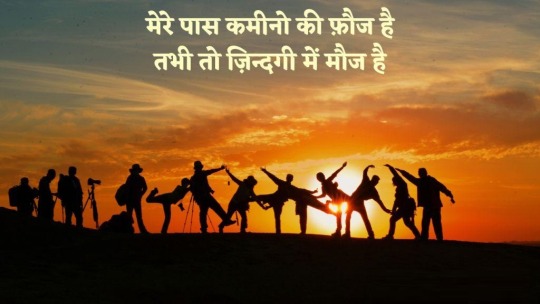
View On WordPress
0 notes
Text
0 notes
Text
1000 Hindi Status (हिंदी स्टेटस) Read Best Status in Hindi
1000 Hindi Status (हिंदी स्टेटस) Read Best Status in Hindi
Hindi Status (हिंदी स्टेटस)
Emotional Status | भावनात्मक स्टेटस
1Tere Naam Se Mohabbat Ki Hai Status | तेरे नाम से मोहब्बत की है स्टेटस2Best Sad Status in Hindi for Life Partner with Images3Best Alone Status in Hindi For Whatsapp4Best Cute Romantic Love status in Hindi For WhatsApp
Punjabi Status | पंजाबी स्टेटस
114 + Friends Status in Punjabi For Whatsapp27+ Yaari Attitude Status in Punjabi…
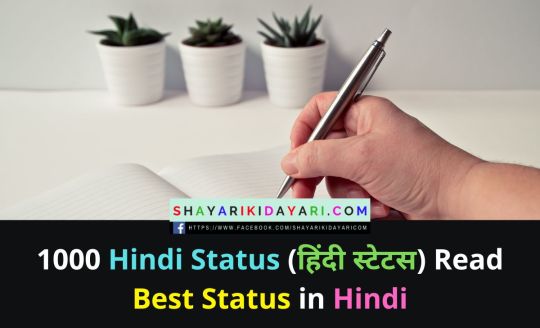
View On WordPress
0 notes
Text
1000 Hindi Status (हिंदी स्टेटस) Read Best Status in Hindi
1000 Hindi Status (हिंदी स्टेटस) Read Best Status in Hindi
Hindi Status (हिंदी स्टेटस)
Emotional Status | भावनात्मक स्टेटस
1Tere Naam Se Mohabbat Ki Hai Status | तेरे नाम से मोहब्बत की है स्टेटस2Best Sad Status in Hindi for Life Partner with Images3Best Alone Status in Hindi For Whatsapp4Best Cute Romantic Love status in Hindi For WhatsApp
Punjabi Status | पंजाबी स्टेटस
114 + Friends Status in Punjabi For Whatsapp27+ Yaari Attitude Status in Punjabi…
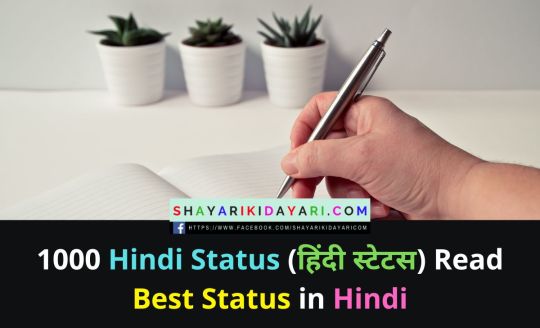
View On WordPress
0 notes
Photo

अपनी Jindgi के अलग #Usull है
#Yaar की खातिर तो #कांटे भी कबूल हैं.
<a href=“https://www.letdigital.in/yaari-status-in-hindi/”>yaari status in Hindi</a>
Source: https://www.letdigital.in/yaari-status-in-hindi/
1 note
·
View note
Link
#Best Dosti Status in Hindi#Yaari Status in Hindi#Sachi Dosti Status in Hindi#Jigri Yaar Status in Hindi#dosti status for fb
0 notes
Link
Read and share Best Attitude Shayari in Hindi 2020 and Attitude Status Images. You can share these Attitude Quotes, Royal Attitude status in hindi in Whatsapp, Facebook, Instagram and in any other social media platforms.
#Attitude Shayari#Attitude Shayari for Boys#Attitude Shayari for Girls#Attitude Shayari Hindi#Attitude Status Hindi 2020#Desi Status in Hindi#Dosti Status#Dosti Status in Hindi#FB Status in Hindi 2020 Hindi Quotes#Hindi Shayari#Royal Attitude Status in Hindi#Royal Status in Hindi#Yaari Status
1 note
·
View note
Photo
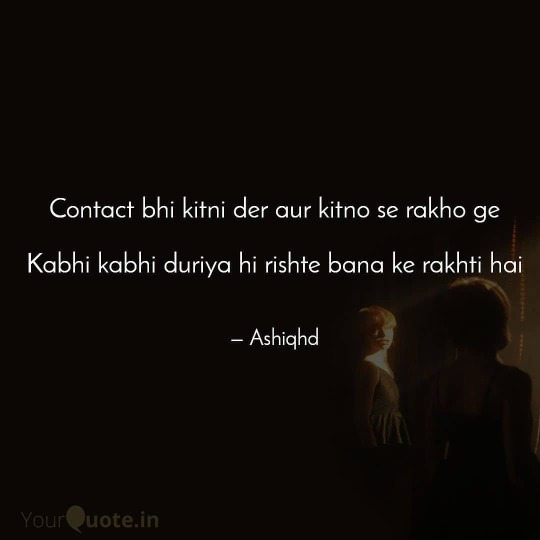
😕 . . . #dosti #love #family #friends #friendship #instagram #yaari #dost #dostiyaari #shayari #status #like #follow #followforfollowback #india #hindi #likeforlikes #attitude #bestfriends #life #yaar #trending #yaariyan #friendshipgoals #instagood #poetry #friendsforever (at Deori, Maharashtra, India) https://www.instagram.com/p/CKL-N_5FxZi/?igshid=1xk06rpgmqpj
#dosti#love#family#friends#friendship#instagram#yaari#dost#dostiyaari#shayari#status#like#follow#followforfollowback#india#hindi#likeforlikes#attitude#bestfriends#life#yaar#trending#yaariyan#friendshipgoals#instagood#poetry#friendsforever
0 notes
Link
Yaari Dosti Shayari in hindi or Jigri Yaari Attitude Status
Yaari Dosti Shayari in hindi , Jigri Yaari Attitude Status : हमारे नए स्टेटस में, यारी दोस्ती स्टेटस Hindi,Best Yaari Dosti Shayari for Whatsapp, Top Dosti Whatsapp Status, Jigri Yaar Dosti Attitude Status, collection of yaari dosti attitude shayari, royal dosti status Hindi, Yaari attitude status hindi ,Dabang Yaari dosti shayari status hindi, Dosti Shayari for FB दोस्तों अगर आपको हमारे हिंदी Yaari Dosti Attitude Shayari Hindi पसंद आए तो इसे Facebook, Whatsapp या अपने दोस्तों के साथ शेयर करना न भूले |
Yaari Dosti Attitude Shayari in hindi -https://badshahstatushindi.blogspot.com/2020/12/yaari-dosti-shayari-in-hindi-jigri.html
#Yaari Dosti Attitude Shayari#jigri yaar shayari in hindi#dosti attitude status#yaari dosti whatsapp shayari#jigri yaari FB shayari status
0 notes
Video
Tere Jaisa Yaar Kahan | Yaari Dosti Status | Dosti Status Whatsapp | Tru...
0 notes
Photo

Kaagaz Ke Phool (1959, India)
Almost a quarter of the way through the twenty-first century, globalization has pierced the remotest corners of the planet. The examples academics and politicians cite demonstrating this globalization are almost always economic, but the most profound examples are cultural. Once known only in South Asia, Indian cinema has burst onto a global stage. Its stars and its most popular directors seem larger than life. Reading on some of modern Bollywood’s (Hindi-language cinema) personalities, I find few of their biographies compelling beyond their unquestionable status as South Asian and international celebrities – I won’t name names here because that is for another time. That is partly a result of not watching enough Bollywood films. It is also because I am making unconscious comparisons between those modern actors to actor-director Guru Dutt. Dutt was a tragic romantic – off- and on-screen – to the point where those personas can become indistinguishable.
As an actor, Dutt can be as charming a romantic male lead as anyone, as well as lend a film the dramatic gravitas it needs. As a director, he refined his sweeping visuals and theatrical flairs over time. That artistic development culminated with Pyaasa (1957) and his final directorial effort, Kaagaz Ke Phool (“Paper Flowers” in English). The latter film is the subject of this piece. Both films elevate themselves to a cinematic altitude few movies anywhere, anytime ever accomplish. They are, for lack of a better word, operatic* – in aesthetic, emotion, storytelling, tone. In Kaagaz Ke Phool, Dutt once again lays bare his artistic soul in what will be his final directed work.
An old man enters a film studio’s empty soundstage, climbs onto the rafters, and gazes wistfully at the darkened workspace below. We learn that this is Suresh Sinha (Dutt), a film director whose illustrious past exists only in old film stock. The film is told in flashback, transporting to a time when his marriage to Bina (Veena) is endangered – the parents-in-law disdain his film work as disreputable to their social class – and he is embarking upon an ambitious production of Devdas (a Bengali romance novel that is among the most adapted pieces of Indian literature to film, the stage, and television). He is having difficulty finding someone to play Paro, the female lead. Due to this conflict, Bima has also forbidden their teenage daughter, Pammi (Kumari Naaz), from seeing Suresh. Pammi is sent to a boarding school far from Delhi (where Bima and her parents reside) and further from Mumbai (where Suresh works), without any sufficient explanations of the spousal strife.
One rainy evening, Suresh generously provides his coat to a woman, Shanti (an excellent Waheeda Rehman). The next day, Shanti arrives at the film studio looking to return the coat. Not knowing anything about film production, she accidentally steps in front of the camera while it is rolling – angering the crew who are tiring of yet another production mishap. Later, while viewing the day’s rushes, Suresh casts Shanti as Paro after witnessing her accidental, but remarkable, screen presence. She achieves cinematic stardom; Suresh and Shanti become intimate. When the tabloid gossip eventually reaches Mumbai and Pammi’s boarding school, it leads to the ruin of all.
What did you expect from an operatic film – a happy ending?
Also starring in the film are Johnny Walker (as Suresh’s brother-in-law, “Rocky”) and Minoo Mumtaz (as a veterinarian). Walker and Mumtaz’s roles are vestigial to Kaagaz Ke Phool. Their romantic subplot is rife with the potential for suggestive humor (she is a horse doctor), but the screenplay never justifies their inclusion in the film.
Shot on CinemaScope lens licensed by 20th Century Fox to Dutt’s production company, Kaagaz Ke Phool is Dutt’s only film shot in letterboxed widescreen. From the onset of his directorial career and his close collaboration with cinematographer V.K. Murthy, Dutt exemplifies an awesome command of tonal transition and control. Murthy’s dollying cameras intensify emotion upon approach: anguish, contempt, sober realization. These techniques render these emotions painfully personal, eliminating the necessity of a few lines of dialogue or supplemental motion from the actor. The effect can be uncomfortable to those who have not fully suspended their disbelief in the plot or the songs that are sung at the time. But to the viewers that have accepted that Dutt’s films exist in a reality where songs about infatuation, love, loss, and regret are sung spontaneously (and where revelations are heard in stillness), this is part of the appeal. Dutt and Murthy’s lighting also assists in directing the narrative and setting mood: a lashing rainstorm signaling a chance meeting that seals the protagonists’ fates, the uncharacteristically film noir atmosphere of the soundstage paints moviemaking as unglamorous, and a beam of light during a love melody evokes unspoken attraction. That final example represents the pinnacle of Dutt and Murthy’s teamwork (more on this later).
As brilliant as his films (including this) may be, Dutt suffered during mightily during Kaagaz Ke Phool’s production. In writings about Dutt, one invariably encounters individuals who believe Dutt’s life confirms that suffering leads to great art. Though I think it best to retire that aphorism so as not to romanticize pain, I believe that the reverse is true with Guru Dutt – his later directing career contributed to his personal tribulations. In some ways, that suffering informed his approach to what I consider an informal semiautobiographical trilogy of his films: Mr. & Mrs. ’55 (1955), Pyaasa, and Kaagaz Ke Phool. Dutt directed and starred in each of these films. In each film he plays an artist (a cartoonist, poet, and film director, respectively); with each successive film his character begins with a greater reputation, only to fall further than the last. The three Dutt protagonists encounter hardship that do not discriminate by caste, professional success, or wealth.
For Dutt’s Suresh, he is unable to consummate his love for Shanti because the specters of his failed marriage haunt him still. He never speaks to his de facto ex, but marital disappointment lingers. Why does he bother visiting his stuffy in-laws when he knows they will never change their opinions about him? Abrar Alvi’s (the other films in the aforementioned informal Dutt-directed trilogy, 1962’s Sahib Bibi Aur Ghulam) screenplay is silent on the matter. Also factoring into Suresh’s hesitation is his daughter, Pammi. Pammi is young, looks up to both her parents, and cannot fathom a parent being torn from her life. Her reaction to learning about Shanti implies that neither of her parents have ever truly talked to her about their separation. Pammi does not appear to blame herself, but it seems that her parents – intent on protecting their child, perhaps speaking to her not as a soon-to-be young adult – are loath to maturely talk about the other. In a sense, Pammi has never mourned her parents’ marriage as we see her deny the tabloid reports about Suresh’s affair and express anger towards her father when she learns the truth.
When Suresh’s film after Devdas flops, his film career is in tatters. But Shanti’s popularity is ascendant, creating a dynamic reminiscent of A Star is Born. In a faint reference to Devdas, Kaagaz Ke Phool’s final act contains anxieties about falling into lower classes. If Kaagaz Ke Phool is contemporaneous to its release date, one could also interpret this as concerns about falling within India’s caste system (reformist India in the late 1950s was dipping its toes into criminalizing caste discrimination, which remains prevalent). Suresh’s fall is stratospheric and, in his caste-conscious, masculine pride, he rejects Shanti’s overtures to help him rebuild his life and film career. This tragedy deepens because Shanti’s offer is in response to the contractual exploitation she is enduring. We do not see what becomes of Shanti after her last encounter with Suresh, but his final scenes remind me, again, of opera: the male lead summoning the strength to sing (non-diegetically in Suresh’s case) his parting, epitaphic thoughts moments before the curtain lowers.
Suresh’s and Shanti’s respective suffering was preventable. Whether love may have assuaged his self-pity and alcoholism and her professional disputes is debatable, but one suspects it only could have helped.
Composer S.D. Burman (Pyaasa, 1965’s Guide) and lyricist Kaifi Azmi (1970’s Herr Raanjha, 1974’s Garm Hava) compose seven songs for Kaagaz Ke Phool – all of which elevate the dramatics, but none are as poetic as numbers in previous Dutt films. Comments on two of the most effective songs follow; I did not find myself nearly as moved by the others.
“Dekhi Zamane Ki Yaari” (roughly, “I Have Seen How Deeply Friendship Lies”) appears just after the opening credits, as an older Suresh ascends the soundstage’s stairs to look down on his former domain. The song starts with and is later backed by organ (this is an educated guess, as many classic Indian films could benefit with extensive audio restorations as trying to figure out their orchestrations can be difficult) and is sung non-diegetically by Mohammed Rafi (dubbing for Dutt). A beautiful dissolve during this number smooths the transition into the flashback that will frame the entire film. That technique, combined with “Dekhi Zamane Ki Yaari”, prepares the audience for what could be a somber recollection. However, this is only the first half of a bifurcated song. The melodic and thematic ideas of “Dekhi Zamane Ki Yaari” are completed in the film’s final minutes, “Bichhde Sabhi Baari Baari” (“They All Fall Apart, One by One”; considered by some as a separate song). Together, the musical and narrative arc of this song/these songs form the film’s soul. For such an important musical number, it may have been ideal to incorporate it more into the film’s score, but now I am being picky.
Just over the one-hour mark, “Waqt Ne Kiya Haseen Sitam” (“Time Has Inflicted Such Sweet Cruelty On Us”; non-diegetically sung by Shanti, dubbed by Geeta Dutt, Guru’s wife) heralds the film’s second act – Suresh and Shanti’s simultaneous realization of their unspoken love, and how they are changed irrevocably for having met each other. Murthy’s floating cameras and that piercing beam of light are revelatory. A double exposure during this sequence shows the two characters walking toward each other as their inhibitions stay in place, a breathtaking mise en scène (the arrangement of a set and placement of actors to empower a narrative/visual idea) foreshadowing the rest of the film.
Dutt’s perfectionist approach to Kaagaz Ke Phool fueled a public perception that the film was an indulgent vanity exercise with a tragic ending no one could stomach viewing. Paralleling Suresh and Shanti’s romantic interest in each other in this film, the Indian tabloids were printing stories claiming that Dutt was intimate with co-star Waheeda Rehman and cheating on Geeta Dutt. These factors – perhaps some more than others (I’m not versed on what Bollywood celebrity culture was like in the 1950s, and Pyaasa’s tragic ending didn’t stop audiences from flocking to that film) – led to Kaagaz Ke Phool’s bombing at the box office. Blowing an unfixable financial hole into his production company, Guru Dutt, a man who, “couldn’t digest failure,” never directed another film. Like the character he portrays here, Dutt became an alcoholic and succumbed to depression in the wake of this film’s release. Having dedicated himself entirely to his films, he interpreted any professional failure as a personal failure.
Kaagaz Ke Phool haunts from its opening seconds. Beyond his home country, Dutt would not live to see his final directorial effort become a landmark Bollywood film and his international reputation growing still as cinematic globalization marches forth. Dutt’s most visually refined films, including Kaagaz Ke Phool, are films of subtraction. The cinematography and music make less movement and dialogue preferable. Kaagaz Ke Phool is a film defined about actions that are not taken and scenes that are never shown. The result is not narrative emptiness, but a receptacle of Dutt’s empathy and regrets. Exploring these once-discarded, partially biographic ideas is not for faint hearts.
My rating: 9/10
^ Based on my personal imdb rating. Half-points are always rounded down. My interpretation of that ratings system can be found in the “Ratings system” page on my blog (as of July 1, 2020, tumblr is not permitting certain posts with links to appear on tag pages, so I cannot provide the URL).
For more of my reviews tagged “My Movie Odyssey”, check out the tag of the same name on my blog.
* I use this adjective not to reference operatic music, but as an intangible feeling that courses over me when watching a film. Examples of what I would consider to be operatic cinema include: Crouching Tiger, Hidden Dragon (2000, Taiwan); Greed (1924); The Red Shoes (1948); and The Wind (1928). Some level of melodrama and emotional unpackaging is necessary, but the film need not be large in scope or have musical elements for me to consider it “operatic”.
#Kaagaz Ke Phool#Guru Dutt#Waheeda Rehman#Kumari Naaz#Bollywood#Mehmood#Johnny Walker#Mahesh Kaul#Veena Sapru#Abrar Alvi#V.K. Murthy#S.D. Burman#Mohammad Rafi#Geeta Dutt#Asha Bhosle#My Movie Odyssey
38 notes
·
View notes
Link
dosti shayari | friendship shayari | dosti shayari in hindi | dost ke liye shayari | friendship shayari in hindi | dosti shayari 2 line, dosti status in hindi | best friend shayari in hindi | friendship shayari in english | best friend shayari in english | dosti ki shayari | dosti shayari in english
0 notes
Text
Dosti Yaari Status In Hindi - Friendship Status In Hindi
Dosti Yaari Status In Hindi – Friendship Status In Hindi
Best yaari status in Hindi, friendship status in hindi.
Dosti Yaari status Image Best Yaari Status In Hindi
Status 1:
खिंच कर उतार देते हैं
उम्र की चादर…
ये कम्भख्त दोस्त…
कभी बूढ़ा नहीं होने देते
~ गुलजार
Status 2:
ए सुदामा
मुझे भी सिखा दें
कोई हुनर तेरे जैसा,
मुझे भी मिल जायेगा
फिर कोई दोस्त कृष्ण जैसा।
Status 3:
मैं तुझे बार-बार इसलिए समझाता हूँ
ए-मेरे दोस्त..
तुझे टूटा हुआ देखकर मैं खुद भी टूट…
View On WordPress
#Best dosti status in Hindi#Best friend status in Hindi#Best Yaari status in Hindi#Dosti shayri in Hindi#Dosti status in Hindi#Dosti yaari status Hindi#fb status for friendship in Hindi#FB status for yaari#Friendship attitude status in Hindi#Friendship status in Hindi#Whatsapp dosti status in Hindi#Whatsapp yaari status in Hindi#yaari dosti status in Hindi#Yaari status in Hindi
0 notes
Text
Dosti Yaari Status In Hindi - Friendship Status In Hindi
Dosti Yaari Status In Hindi – Friendship Status In Hindi
Best yaari status in Hindi, friendship status in hindi.
Dosti Yaari status Image Best Yaari Status In Hindi
Status 1:
खिंच कर उतार देते हैं
उम्र की चादर…
ये कम्भख्त दोस्त…
कभी बूढ़ा नहीं होने देते
~ गुलजार
Status 2:
ए सुदामा
मुझे भी सिखा दें
कोई हुनर तेरे जैसा,
मुझे भी मिल जायेगा
फिर कोई दोस्त कृष्ण जैसा।
Status 3:
मैं तुझे बार-बार इसलिए समझाता हूँ
ए-मेरे दोस्त..
तुझे टूटा हुआ देखकर मैं खुद भी टूट…
View On WordPress
#Best dosti status in Hindi#Best friend status in Hindi#Best Yaari status in Hindi#Dosti shayri in Hindi#Dosti status in Hindi#Dosti yaari status Hindi#fb status for friendship in Hindi#FB status for yaari#Friendship attitude status in Hindi#Friendship status in Hindi#Whatsapp dosti status in Hindi#Whatsapp yaari status in Hindi#yaari dosti status in Hindi#Yaari status in Hindi
0 notes
Photo
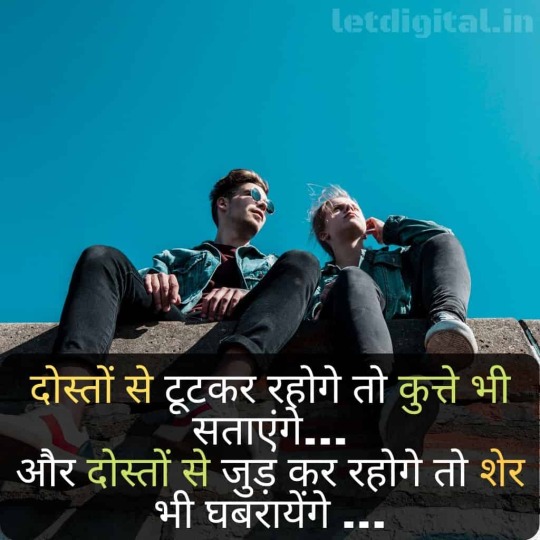
Friendship Status in Hindi
0 notes
Photo

100+ Yaari Dosti Status, Quotes, Shayari in Hindi | दोस्ती स्टेटस Visit- www.trandyreporter.in https://www.instagram.com/p/CTs_oe7IAs0/?utm_medium=tumblr
0 notes